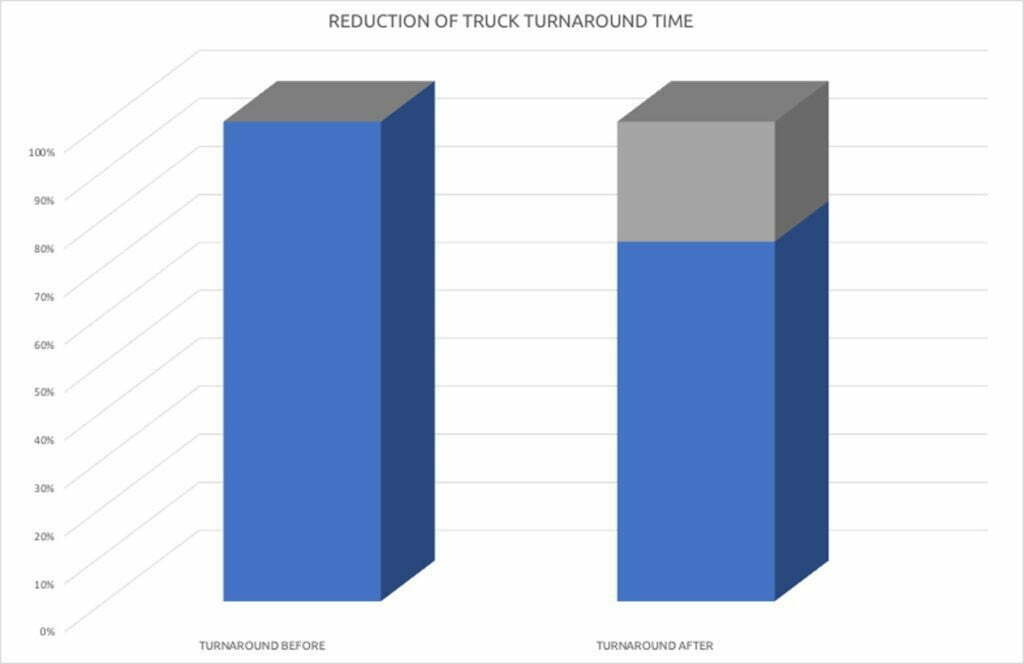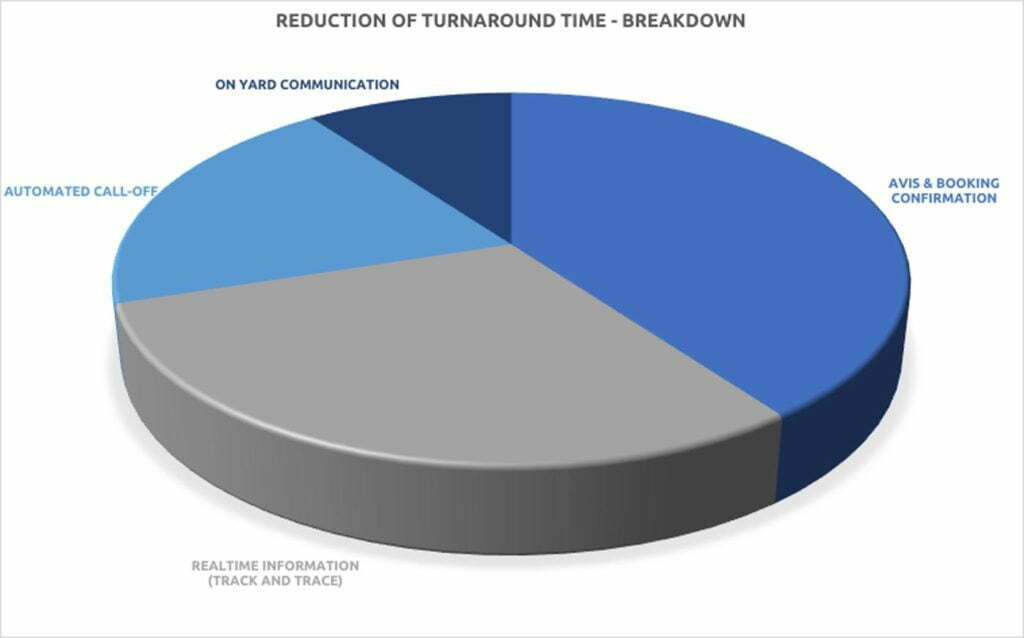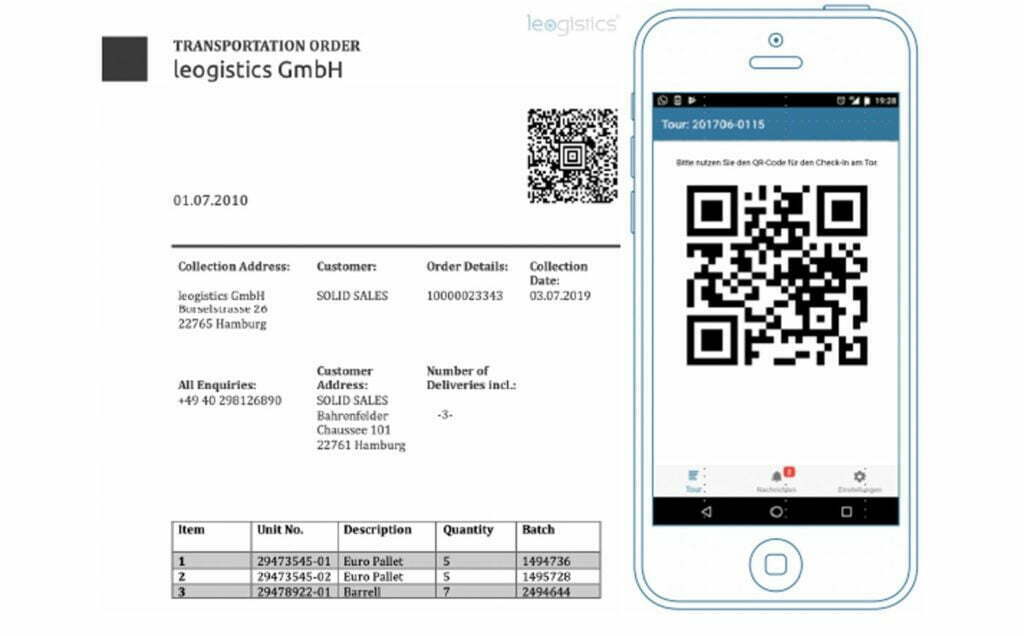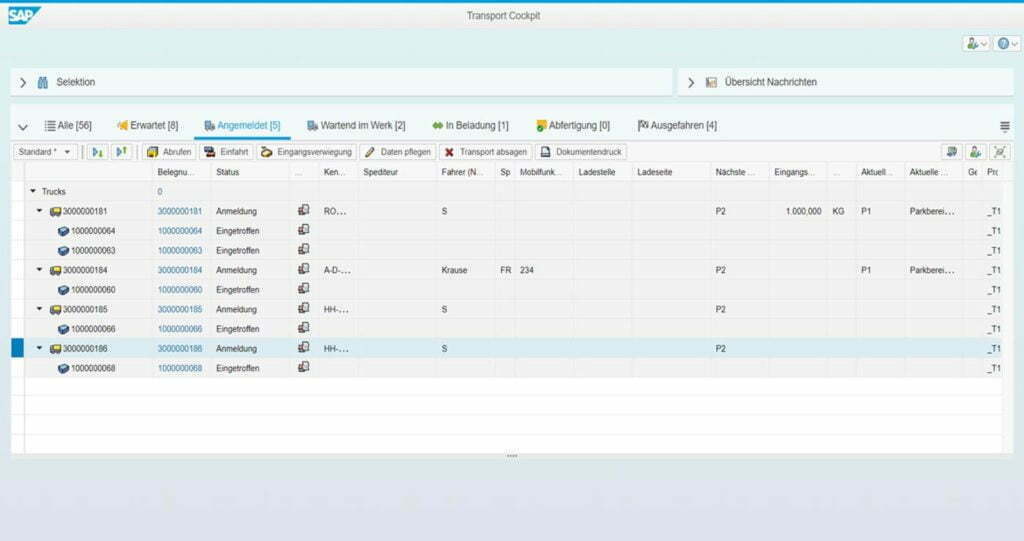Optimize Truck Dispatch Through Pre-registration And Collaborative Processes
How can downtimes be minimized? How can check-in and check-out processes on the plant site be made more efficient? How can waiting times in front of the plant or during loading and unloading be avoided?
The solution approach outlined below can be understood as a modular principle. By combining the means individually tailored to your processes and physical conditions, you can guarantee that
- the turnaround of a delivery or pickup is improved and thus demurrage is reduced, increased driver satisfaction has a positive effect on cooperation at the gate and loading ramp, and
- process costs can be reduced.
Cost and Time Savings Through Cooperation
In many cases, drivers come to your plant site repeatedly over a long period of time and know the handlers. They are familiar with the customs and only need instruction in exceptional cases. They don’t need directions to loading points and know where to find a coffee.
So why not take advantage of this?
Even the check-in process can involve long waits for truck drivers due to traffic delays and hold-ups. In order to increase throughput time and minimize waiting times for drivers, various process optimizations can be made.
One prerequisite for this is that information about the driver and transport is already transmitted to the shipper in advance.


Use of a driver database
Simplify security checks and the check-in process by creating a driver register of all known drivers. Each driver must provide vehicle and driver-related data during the check-in process, which is then verified by the handler. This process must be repeated for each company and for each check-in. Especially for regular drivers and drivers who drive to the same plant several times a day, this process is a time-consuming task.
In this process, the relevant data of the drivers is created and stored once in a database. The driver still has to report to the counter, but the data check is faster because the data has already been recorded and the documents are simply checked against the existing data. Data such as the driver’s license, ID card, but also ADR approvals can be stored in the database.
Cooperation at check-in
If the driver database is integrated directly into the check-in process, driver turnaround times can be further reduced. With integration into the check-in process, data entry can be reduced to the driver’s name or driver number and vehicle registration number. All other data is automatically taken from the database. In this case, registration at check-in is done by using a transport number, ideally provided by barcode. This barcode is transmitted to the freight forwarder with the order confirmation.

In addition, plausibility checks can be integrated to verify certain data from the database, such as the validity of documents (especially driver’s license validity, ADR approvals and individual safety instructions).
Safety at the plant
This process optimization not only offers advantages in terms of minimizing throughput times, but also extensive benefits for plant security:
- By recording entry and exit times, all relevant driver and vehicle-related information is available at any time. Special reports can serve as fire department lists, which are consulted in case of emergency evacuations.
- If a driver is overdue for the scheduled exit and should be contacted, this can be done via the phone number stored in the database or directly via app.
- Access authorizations but also possible access blocks can be stored in a database. Additional verification information can be stored, such as fingerprints or PIN codes.
- A history of all visits of a specific driver can be performed via a simple query of all transport documents for the master date “driver”.
Self Check-in
The check-in process and the associated waiting time and general processing time can be optimized even further if a self-check-in terminal is used for the check-in process. At such a terminal, drivers can perform the check-in independently by scanning or entering the reference document, the name and the remaining transport-relevant data. The same plausibility checks that are also carried out at the check-in counter and the integrated driver database can be integrated in the process. If such a check prevents the driver from checking in at the self-check-in, he or she can be referred to the counter, where his or her data in the database is checked or updated.

Self check-in safety briefing
If the automatic validity check of the last safety training determines that the test must be performed again in accordance with company policy, the check-in terminal can be used to navigate to the corresponding question catalog. To complete his registration, the driver must now read a series of safety-related texts and answer questions.

Call-off Management
With the use of a driver database, not only the check-in process but also the call-off control can be optimized. If the driver’s phone number is stored in the database, it is possible to control the call-off from the parking lot to the loading point directly during check-in or at a later time via SMS or app. The retrieval takes place as soon as a loading point becomes free again due to the departure of the process predecessor. In addition to the waiting times during the check-in process, this reduces the waiting times at the loading point and ensures a smooth overall process at the yard. Bottleneck loading points in particular can achieve an evenly distributed utilization with the help of this measure.

Compliance with the General Data Protection Regulation (GDPR)
However, it must be noted that the use of a driver database is subject to the guidelines of the GDPR. If the actual purpose of the personal data is no longer given, the data must be deleted from the database and any connection to the data set must be anonymized.
In our project experience, the use of permanently scheduled deletion reports has proven to be a very good means of cleaning up old data records.
Benefits of Cooperation
Efficient yard management is based on the availability of safety and process-relevant information. The notification of deliveries and collections plays just as important a role as information about drivers and vehicles. The level of detail of the information provided varies depending on the degree of automation targeted and on industry-specific features (for example, certificates in the beverage industry).
Overall, the data collection process in a company can be greatly improved and made even more effective through useful checks.
With leogistics d.s.c. we provide you with a solution to optimize your yard processes with the help of the aforementioned solution components. We enable you to reduce down and waiting times and to design the processes with drivers and forwarding agents collaboratively – and thus more efficiently.
For questions about this and other topics in the blog, please contact blog@leogistics.com.
Nina Mallien
Consultant SAP Logistics
Jan-Philipp Horstmann
Consultants SAP logistics




